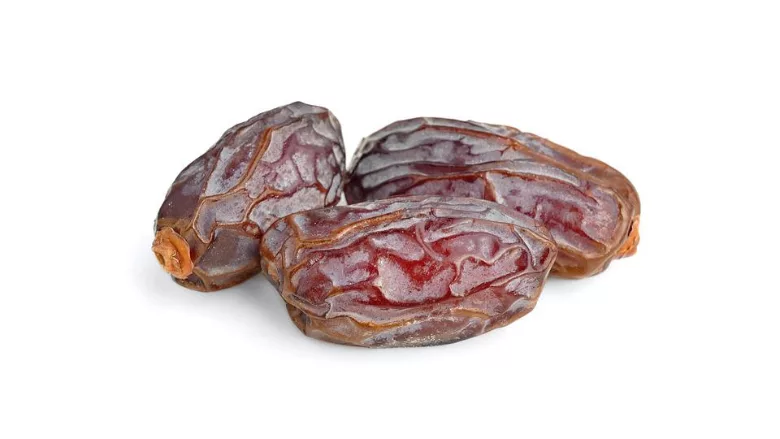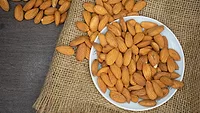IAFP 2022: Persistence of Norovirus, Hepatitis A in Low-Moisture Foods

Credit: pictavio via Pixabay
On Tuesday morning at the 2022 International Association for Food Protection (IAFP) Annual Meeting, leading industry academics discussed the topic of enteric virus persistence in low-moisture foods (LMFs). The session featured Kristen Gibson, Ph.D., Associate Professor of Food Safety and Microbiology at the University of Arkansas; Lee-Ann Jaykus, Ph.D., Distinguished Professor of Food, Bioprocessing, and Nutrition Sciences at North Carolina State University; and Alvin Lee, Ph.D., Director of the Center for Processing Innovation at Illinois Institute of Technology’s Institute for Food Safety and Health.
The three presenters discussed the features of significant enteric viruses and LMFs, relevant foodborne illness outbreaks, and promising processing technologies for the inactivation of enteric viruses in LMFs. Dr. Lee opened the session by noting that relatively little research has been conducted in the realm of viral contamination of LMFs, stating, “While we may not have all the answers to the questions you raise, I hope that our presentations begin a discussion.”
Hepatitis A and Human Norovirus
Dr. Gibson introduced and gave an overview of the two most relevant enteric viruses in food safety—human Norovirus and Hepatitis A—on which Dr. Jaykus later elaborated. The viruses share several characteristics, such as being resistant to environmental degradation, having a low infectious dose, and shedding from infected individuals at high concentrations. The enteric viruses are also highly persistent on foods and are difficult to inactivate. According to Dr. Jaykus, the viruses can persist on surfaces for days to weeks at room temperature; on foods in water, the viruses can persist for weeks to months if refrigerated, and indefinitely if frozen. Although viral persistence is strong for enteric viruses, the viruses’ survivability depends on the surface, matrix, and temperatures to which they are subject.
Hepatitis A is more common in low-income countries and its common modes of transmission are ready-to-eat (RTE) foods, fresh and frozen produce, and LMFs. Hepatitis A has a public health impact of over 37,000 foodborne cases in the U.S., annually. Norovirus, which causes approximately 5.5 million cases of foodborne illness in the U.S. each year, is mainly transmitted through foods at restaurants due to contamination by infected food handlers; soft, red fruits are also associated with Norovirus due to being hand-harvested. Foods that are handled by humans during harvesting, processing, or preparation are common vehicles for Norovirus as the pathogen can remain infectious and shed from infected individuals for up to eight weeks.
In dry environments, the enteric viruses can transfer between surfaces at a rate of 5–10 percent; in moist environments, the viruses’ rate of transferability increases to over 95 percent. Hepatitis A and Norovirus have also shown to be effective at attaching and sticking to existing biofilms.
LMFs as a Vehicle for Viral Transmission
Looking for quick answers on food safety topics?
Try Ask FSM, our new smart AI search tool.
Ask FSM →
Dr. Gibson defined LMFs as “…foods with a water activity of less than 0.85 [that] are generally considered less susceptible to microbial spoilage and the growth of foodborne pathogens.” She continued, “…but we are talking about viruses, and viruses cannot grow. So, the question is, are these LMF environments suitable to sustain persistence of human Norovirus and Hepatitis A virus? The answer is yes, they can be.” Additionally, Dr. Jaykus stated that “low-moisture” is not synonymous with “low-water” when discussing food products. Additives such as salt and sugar can render a food “low-moisture” without reducing the food’s water content.
LMFs are a topic of concern regarding viral persistence for several reasons. The foods often serve as ingredients for other products, and many LMFs have extended shelf lives of over two years. Therefore, LMFs have a wide reach throughout the global food system and can remain on the market or in consumers’ homes for long periods of time. LMFs are also often stored at room temperature and are not subject to a consumer-level kill step involving heat, which poses a food safety challenge as viral persistence increases at lower temperatures. LMFs provide a stable environment for enteric viruses to persist. “For LMFs, prevention is key,” Dr. Jaykus said, “…because eliminating viral contaminants from LMFs once they are introduced is very difficult.”
LMFs and Foodborne Enteric Virus Outbreaks
Dr. Gibson, Dr. Jaykus, and Dr. Lee discussed several foodborne illness outbreaks of Norovirus and Hepatitis A that were linked to LMFs, highlighting key takeaways. One Japanese outbreak of Norovirus associated with nori (dried seaweed) was particularly significant, causing 2,000 cases of illness in seven individual outbreak clusters that spanned four regions. Investigations traced the source of the outbreak to one infected employee at a single facility. Norovirus that shed from the employee had remained infectious at the facility for over two months at ambient temperatures; however, the percentage of Norovirus cases that arose from the associated nori products waned over time, possibly indicating a decrease in viral persistence.
Two important Hepatitis A outbreaks that have been linked to LMFs include Medjool dates distributed throughout the Australian and UK markets, and sundried tomatoes in Australia. Notably, through whole genome sequencing, traceback investigations were able to identify dates grown in Jordan as the root cause of the former outbreak due to the region being home to a unique genotype of Hepatitis A. Both Medjool dates and sundried tomatoes provide adequate environments for Hepatitis A to persist, especially dates due to their high sugar content and naturally low moisture levels. In general, the majority of foodborne Hepatitis A and Norovirus outbreaks associated with LMFs have occurred in Asia or Oceana.
Sanitation and Processing for Viral Inactivation of LMFs
Dr. Jaykus noted that, when aiming to inactivate Norovirus or Hepatitis A on surfaces, the formulation and application of disinfectants matters greatly. In the case of Norovirus, it is crucial to use chemicals that are verified as effective against the virus. Adequate contact time of disinfectants on surfaces is also important for inactivation, as is using proper concentrations of the chemicals.
Aside from surface sanitation, Dr. Lee underlined several processing technologies that may be useful to inactivating viruses on LMFs, the efficacy of each being dependent on the matrices they are used to treat. Ozonation is particularly effective for foods with higher water contents, and hydrogen peroxide vapor is useful for foods with smooth surfaces. UV light treatment disrupts the genomic material of viral contaminants and is more effective the longer it is applied to a food, however, its efficacy is limited due to it degrading the quality of food products that are exposed for extended periods of time.
Ozonation and UV treatment can be combined in a process called advanced oxidation, which has varied efficacy dependent upon surface type, surface chemistry, and matrices. Pulsed light processing is also an inactivation technique that features UV rays.
High-pressure processing (HPP) is a widely used processing technology that has shown some promise in the inactivation of viral contaminants. HPP is particularly effective when applied to frozen foods, although treating whole fruits can cause product deformities. A product’s salinity is another factor that can affect HPP’s viral inactivation efficacy. Emerging technologies that have shown promise are plasma-based methods, thermal inactivation, and irradiation techniques such as e-beam and X-ray.
After providing an overview of the processing technologies that may be useful for inactivating viruses in LMFs, Dr. Lee asked attendees to take away one key message as the food safety sector continues to explore the growing body of knowledge regarding viral persistence and inactivation in LMFs. “With all control strategies we need to demonstrate their efficacy against viruses, as well as validate and document their efficacy,” he concluded.
The 2022 IAFP Annual Meeting is taking place July 31–August 3 in Pittsburgh, Pennsylvania.









